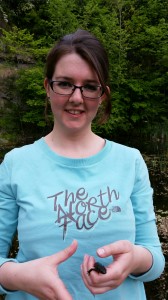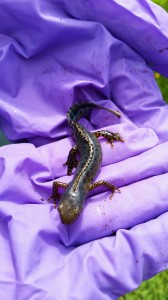
It’s been awhile . .
Firstly, apologies about the lack of updates – I have been a busy bee, once I’ve talked through what I’ve been up to for the last year or so maybe you’ll let me off the hook!
In October I started a Masters in Biological Recording run by Manchester Metropolitan University. The MSc is a part-time course and one of its main selling points are the practical field ID courses.
The winter modules focus on the theoretical side of biological recording; how to make scientificly strong records and how to ensure you are always following the law! These are important but not as fun as the summer field work sessions!
My first assignment was to study the Red campion (Silene dioica). Which as a member of the Campion family myself I was rather pleased with! My project involved doing a portfolio on the Red campion and also doing a slightly terrifying class presentation showing off my ‘expertise’ on the species!
All things scaly and slimy
I absolutely LOVED my chosen summer modules, especially the first one; Reptiles and Amphibians! I have accompanied colleagues of mine on a few surveys, learning from their experience and knowledge, but this was something I couldn’t wait to get stuck in with myself! Chris and I had recently done a Great Crested Newt (GCN) survey and had come up empty handed, so I had never seen a GCN and it was on the top of my to do/find list! But how do you know its GCN and not another species? Well once I’d witnessed a female GCN, I knew the answer. They are HUGE in comparison and have very distinctive colouring.
Saving nature, one newt at a time
During the field course we even managed to save a female GCN! One of the females we found had bizarrely eaten a stickleback and therefore couldn’t breathe! John (our tutor) managed to tweezer out the stickleback (don’t ask who was carrying the tweezers around!). He did a great job, and we found the same GCN (we knew it was her as she had part of her tail missing) under some logs a fair distance from the pond the following evening!
Aliens in ponds
As if the above wasn’t exciting enough, I then got to see an Alpine newt! These guys are beautiful but deadly for a native newts. The Alpine newt can carry chytridiomycosis which is an infectious disease in amphibians. The Alpine newt is native to central Europe and most populations in the UK are as a result on deliberate introductions. As you can see they appear blue with a small leopard print crest and underside.
We managed to identify and learn about a variety of other native amphibians, such as the smaller smooth and palmate species of newts, as well as some reptiles like the common lizard and the slow worm.
Identifying ‘difficult’ plants
The second course was called ‘Identifying Difficult Higher Plants’, the name sounds rather intimidating; they’re already informing you that it’s difficult! Now, what do they classify as difficult higher plants and why? Well if you know the answer drop me a comment as that is my next essay I have to write! The plant groups we spent time looking at were mainly grasses and sedges. Luckily, I had been on a course on this last year otherwise I think I would’ve struggled to keep up. Unfortunately, as I had only regularly seen common grasses and hardly any sedges, 70% of the information had leaked out of my brain! Common theme occurring, if you don’t practise what you learn on these courses fairly regularly you will forget a good proportion of the content and as such (a bit hypocritical as this is what I didn’t do) a good tip is to go out and practise and take your notes with you. We also had a rather painful session on identifying different whitebeams…, I won’t be taking that up as a hobby . . .
Which all led up nicely to my final course, which was identifying Sedges and their allies. So, what I may have not previously stated, is that I really like sedges. It’s not something you hear very often . . . but they really aren’t that scary once you start to like them!
My previous courses had all been in Preston Montford, the Field Studies Centre in Shrewsbury but this one was in Rhyd-y-Creuau in Betws-y-Coed, North Wales. The scenery around there is beautiful and is an amazing place to do courses. The field trips largely involved going to Anglesey, looking at Fens and also being able to visit the sea side to look at the saline tolerant species. We spent all day, every day out in the field looking at sedges and we saw approximately 30 different types (wow).
Up to date
So if essays, assignments and field trips aren’t enough to keep me busy, I am now a Graduate Consultant completing my own surveys for Arbtech. Our principal, Chris Formaggia – has accredited me on his bat licence so I can now complete my own preliminary roost assessments, which are then proofed by my Arbtech colleagues to keep me progressing and improving. I am still going out to complete Preliminary Ecological Appraisals, all the time feeling more confident from the experience I am gaining and the ID knowledge I am building up from my Masters. I’ve done a couple of eDNA tests ran by Fera which detect if GCN’s are using ponds. Last but not least I am now leading bat emergence surveys which was a bit scary at first but soon becomes second nature, helped by the amazing North West bat team!
You can still find me at the Arbtech HO fairly often, helping the new admin team find their feet and drinking all the tea and coffee! Hopefully that explains my absent blogs and I hope you enjoyed the update!
What did you think? Please comment below or tweet us at @SuperFastSurvey
-Amy Campion







